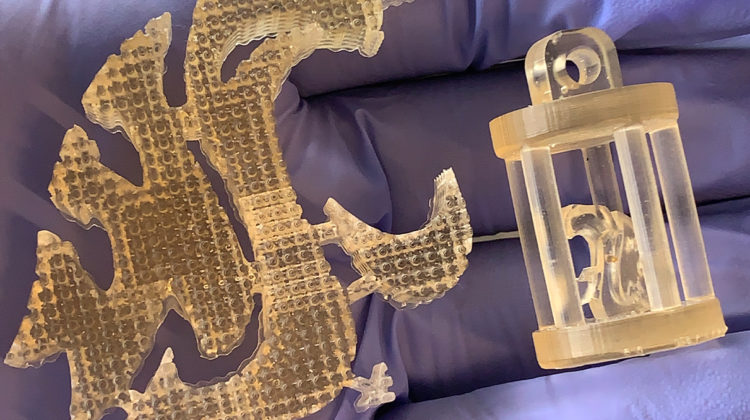
A team of researchers from Washington State University has developed a simple, cheap and efficient way to convert polylactic acid (PLA), a bio-based plastic used in products such as filament, plastic silverware and food packaging, into a high-quality resin. About 270,000 tonnes of PLA are produced annually and its use is increasing dramatically.
‘We found a way to immediately turn this into something that’s stronger and better, and we hope that will provide people the incentive to upcycle this stuff instead of just toss it away,’ said Yu-Chung Chang, a postdoctoral researcher in the WSU School of Mechanical and Materials Engineering. ‘We made stronger materials just straight out of trash. We believe this could be a great opportunity.’
Although bio-based, PLA, which is categorized as a #7 plastic, doesn’t break down easily. It can float in fresh or salt water for a year without degrading. It’s also rarely recycled because, as with many plastics, when it’s melted down and re-formed, it doesn’t perform as well as the original version and hence becomes less valuable.
‘It’s biodegradable and compostable, but once you look into it, it turns out that it can take up to 100 years for it to decompose in a landfill,’ Chang said. ‘In reality, it still creates a lot of pollution. We want to make sure that when we do start producing PLA on the million-tonnes scale, we will know how to deal with it.’
The researchers developed a fast, catalyst-free method for recycling the PLA, breaking the long chain of molecules down into simple monomers – the building blocks for many plastics. The entire chemical process can be carried at mild temperatures in about two days. The chemical they used to break down the PLA, aminoethanol, is also inexpensive.
‘If you want to rebuild a Lego castle into a car, you have to break it down brick by brick,’ Chang said. ‘That’s what we did. The aminoethanol precision-cut the PLA back to a monomer, and once it’s back to a monomer, the sky’s the limit, because you can re-polymerise it into something stronger.’
Once the PLA had been broken down to its basic building blocks, the researchers rebuilt the plastic and created a type of photo-curable liquid resin that’s commonly used as printing ‘ink’ for 3D printers. When it was used in a 3D printer and cured into plastic pieces, the product showed equal or better mechanical and thermal properties than commercially available resins.
While the researchers focused on PLA for the study, they hope to apply the work to polyethylene terephthalate (PET), which is more common than PLA, has a similar chemical structure and presents a bigger waste problem.
Having filed a provisional patent, the researchers are now working to further optimise the process and are looking into other applications for the upcycling method.
The research has been published in Green Chemistry.



